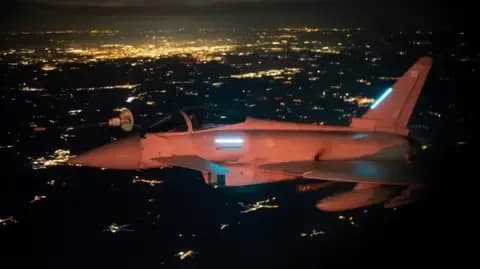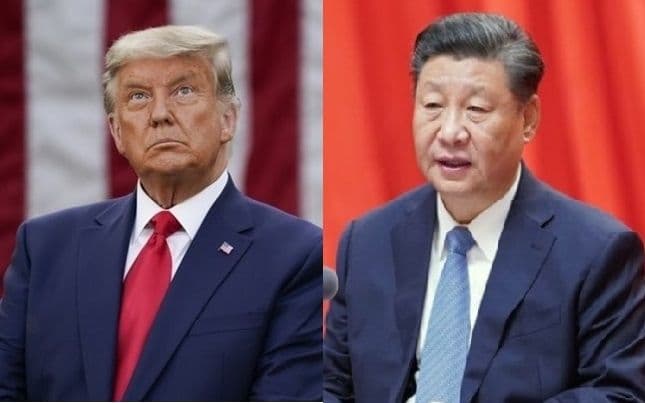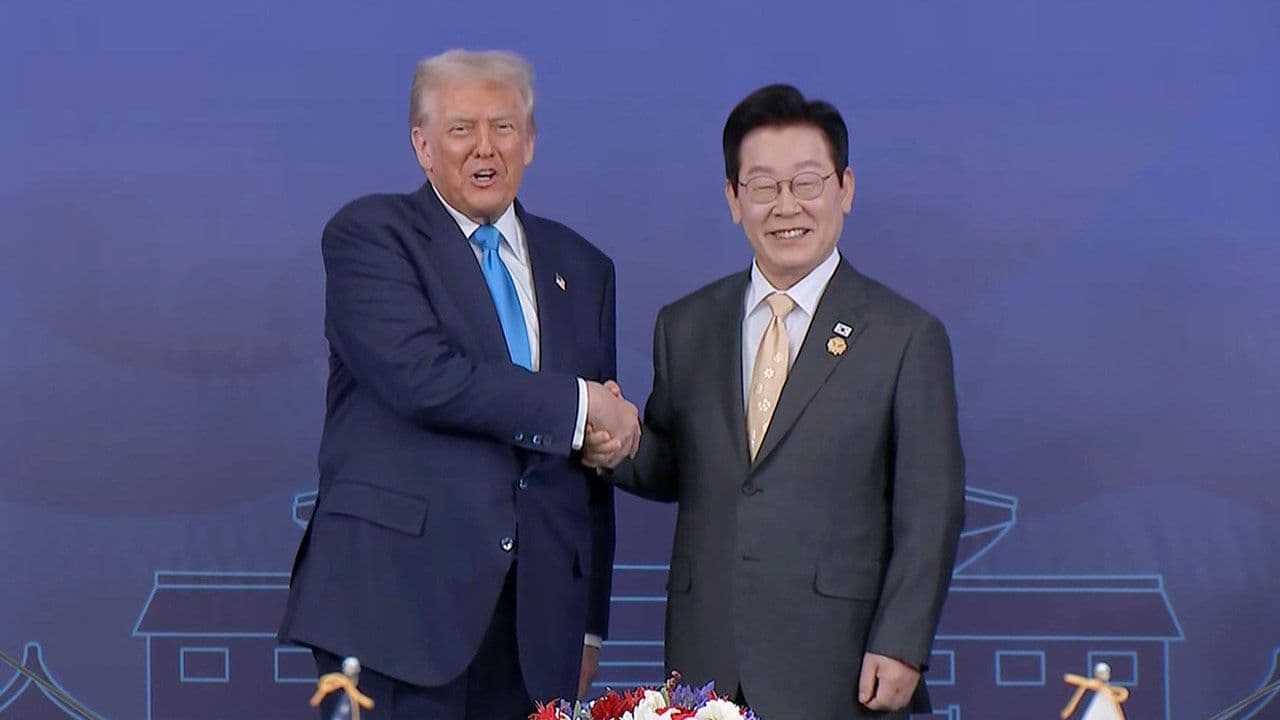The Unseen Hand: How Modern Weapons Are Reshaping Global Diplomacy
Explore how advanced weapons like hypersonics are changing global power dynamics. Unpack the new arms race, its diplomatic impact, and the paradox of deterrence in modern geopolitics.
The Dawn of a New Era: Hypersonics and Nuclear Modernization
A profound shift is underway in global military capabilities, heralded by the rapid advancement of hypersonic missiles and the modernization of nuclear arsenals. Reports from American researchers Jeffrey Lewis and Decker Eveleth, based on commercial satellite imagery, point to Russia's preparations for a new test of its nuclear-powered cruise missile, the 9M730 Burevestnik, also known as 'Storm Petrel.' Increased activity, including personnel, equipment, ships, and aircraft associated with prior missile tests, has been observed at the Pankovo test site on the . This development, confirmed by a Western security source, underscores a significant leap in strategic weaponry. Further, the has indicated intent to test the Oreshnik, a medium-range hypersonic missile described as capable of speeds ten times that of sound, carrying six nuclear warheads, and boasting a range of up to 3,000 kilometers. Moscow asserts no other nation possesses such a missile, having reportedly used it in last November and planning its deployment in by year-end. These capabilities aren't just incremental improvements; they represent a fundamental challenge to existing defense paradigms, promising unprecedented speed and maneuverability that could render current missile defense systems obsolete and drastically compress decision-making timelines in a crisis.
Beyond Battlefield Dominance: Weapons as Diplomatic Tools
The emergence of these new-generation weapons extends their utility far beyond the traditional battlefield. They are fast becoming potent instruments of diplomatic leverage, shaping international relations through their mere existence and the threat of their deployment. Consider the joint nuclear weapons exercise, 'Zapad 2025,' planned by and for mid-September. Such large-scale drills, featuring advanced nuclear-capable systems, are less about immediate combat readiness and more about projecting power, signaling resolve, and influencing the strategic calculations of adversaries and allies alike. The anticipated deployment of Oreshnik hypersonic missile in by the end of the year serves a similar purpose, effectively redrawing lines of conventional and strategic influence in . These moves aren't just military posturing; they are carefully orchestrated acts of 'deterrence by demonstration,' designed to compel concessions, secure alliances, or dissuade intervention without firing a single shot. The very possibility of these weapons being used, or even their sheer existence, forces nations to recalibrate their foreign policy and security strategies, transforming military might into a direct, albeit silent, diplomatic tool.
The Paradox of Deterrence: Stability or Greater Risk?
The pursuit and deployment of advanced weaponry, particularly modernized nuclear arsenals and hypersonics, thrusts us deeper into a complex paradox of deterrence. On one hand, proponents argue that these overwhelming capabilities reinforce mutual assured destruction (MAD), making any large-scale conflict, especially between nuclear powers, unthinkable. The logic dictates that the sheer destructive potential of a Burevestnik or a nuclear-capable Oreshnik missile should compel caution and prevent escalation. Yet, this very pursuit of 'ultimate' deterrence simultaneously introduces unprecedented risks. Hypersonic speed drastically reduces warning times, increasing the likelihood of miscalculation or an accidental launch in a crisis. The blurring lines between conventional and nuclear capabilities, as seen with multi-capable systems, further complicates arms control and risk reduction efforts. Joint exercises like 'Zapad 2025,' while intended to signal strength, can be perceived as provocative, fueling an arms race rather than defusing tensions. Are we truly achieving stability through fear, or are we simply increasing the probability of a catastrophic error in a world where decision windows shrink to minutes and the stakes are immeasurably high? This delicate balance teeters on the precipice, constantly challenging the efficacy of traditional deterrence theory.
The Shadow Wars: Weaponizing Information and Economies
While the focus often remains on hardware—missiles and warheads—the landscape of global diplomacy is also being reshaped by less tangible, yet equally potent, forms of weaponization: information and economies. The sheer financial investment required to develop and maintain cutting-edge weapons like hypersonics and modernized nuclear arsenals places immense pressure on national budgets, influencing economic policies and trade relations. Nations might offer economic incentives or impose sanctions, leveraging their financial power to gain strategic advantages or counter military threats. The narrative surrounding these weapons, disseminated through state-controlled media or sophisticated disinformation campaigns, becomes a weapon itself, shaping public opinion, sowing discord, and undermining adversaries. Consider how the mere announcement of a new missile test or the deployment of a strategic weapon can send ripples through global markets or ignite a propaganda war. The economic strain of an escalating arms race, driven by these advanced technologies, can force nations into difficult choices, impacting their domestic stability and international partnerships. This interconnectedness means that military advancements don't exist in a vacuum; they are intrinsically linked to a broader 'shadow war' fought with economic coercion and information manipulation, where the stakes are often geopolitical influence and systemic stability.
Navigating the Future: Crafting a New Global Security Framework
The rapid evolution of weaponry, particularly the dual threat of hypersonics and modernized nuclear arsenals, demands an urgent re-evaluation of our global security architecture. Existing arms control treaties, many forged in a different era, struggle to keep pace with capabilities that challenge established notions of speed, range, and detection. The deployment of missiles like the Oreshnik in new strategic locations, or the continued testing of systems like the Burevestnik, underscores a growing gap in international norms and agreements. Moving forward, the international community faces the critical challenge of crafting a new framework that addresses these realities. This isn't merely about imposing new restrictions but fostering renewed dialogue, building transparency, and developing innovative risk reduction mechanisms. We need to explore how to manage the inherent instability introduced by ultra-fast, potentially undetectable weapons, and how to prevent miscalculation in an environment where warning times are minimal. Diplomacy, therefore, must evolve beyond traditional negotiations; it requires a collective commitment to understanding these new threats, establishing clear red lines, and creating channels for de-escalation that can function even in moments of extreme tension. The future of global security hinges on our ability to adapt, innovate, and cooperatively manage the 'unseen hand' of modern weaponry before it reshapes diplomacy beyond recognition.
Related Articles

Guardians of the Horizon: Inside the RAF's Evolving Mission of Deterrence

Guardians of the Horizon: Inside the RAF's Evolving Mission of Deterrence

The Geoeconomic Chessboard: Tariffs, Rare Earths, and Strategic Vulnerabilities

The Geoeconomic Chessboard: Tariffs, Rare Earths, and Strategic Vulnerabilities

The Unseen Architects of Agreement: Decoding Global 타결 in a Volatile Era

The Unseen Architects of Agreement: Decoding Global 타결 in a Volatile Era

Tuapse's Crucible: A Black Sea Port at the Heart of Modern Geopolitics
